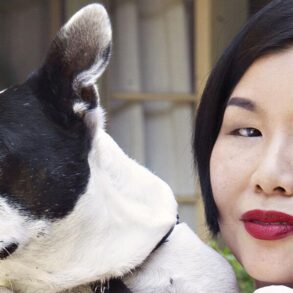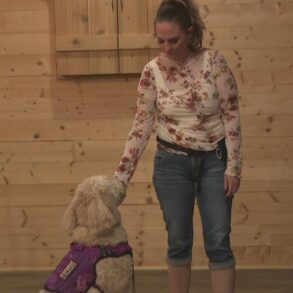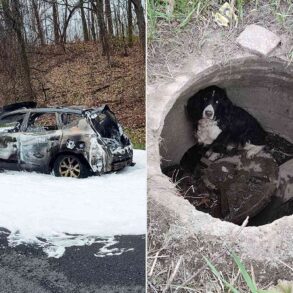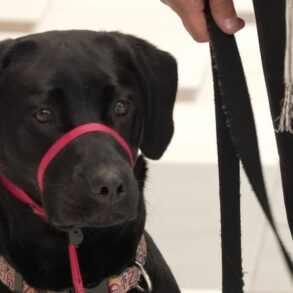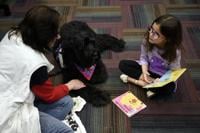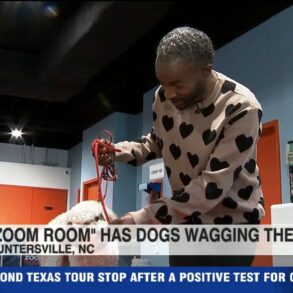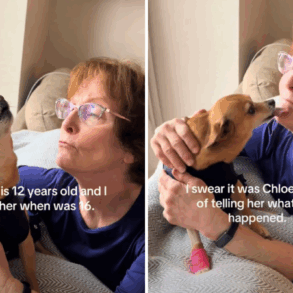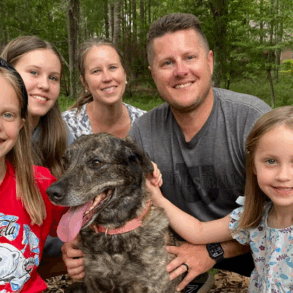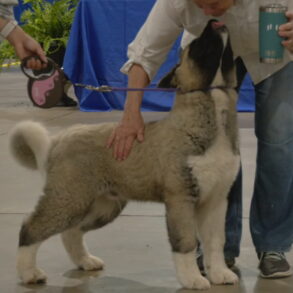
Dog breeding is a huge, lucrative international enterprise, and there are clear problems in breeders’ efforts to produce dogs who suffer from any number of physical and emotional maladies to satisfy humancentric desires. In a new and extremely important paper titled “A New Future for Dog Breeding,” published in the journal Animal Welfare, dog experts Helle Friis Proschowsky, Peter Sandøe, and seven colleagues offer an overview of current breeding, including the production of designer breeds and dogs who suffer from numerous health and behavioral anomalies.
Here’s what two of the authors, Helle Friis Proschowsky and Peter Sandøe, had to say about this landmark study.
Why did you and your colleagues write “A New Future for Dog Breeding”?
We have both been engaged in the discussion about healthy dog breeding for quite some time. Peter was chairman of the Danish Animal Ethics Council when the Council published a report about the breeding of dogs and cats in 1999. And he has authored or co-authored numerous publications, academic and popular, about the effects of breeding on dog welfare. Parallel to her academic work, Helle has been employed as a genetic consultant in the Danish Kennel Club from 1996 to 2001 and again from 2010 to 2023.
We have both witnessed how the discussion about unhealthy breeding and severe welfare problems for some purebred dogs has emerged in the media from time to time. Some initiatives have been implemented by the organized dog community—and in recent years, we have seen new legislation coming into force in countries like Germany and the Netherlands—but it seems like the needed changes are only in their infancy.
In July 2023, Peter gave a keynote presentation at the Canine Science Forum in Budapest with the title “Will dog breeds as we know them today soon be a thing of the past?” After the conference, the international team of colleagues who contributed to the presentation agreed to try to turn the content of the talk into a scientific paper, which is what we’re discussing here.
How does your research relate to your backgrounds and general areas of interest?
Helle has a background in genetics, with a focus on dog genetics, while Peter’s background is in philosophy; he has a long-standing interest in ethical and animal welfare issues linked to animal breeding. Our current research is carried out at the Centre for Companion Animal Welfare at Copenhagen University. This research center facilitates research into the nature and scale of the welfare problems of companion animals like dogs, cats, horses, and rabbits.
Many of the welfare problems we see in dogs are a consequence of breeding—and, thus, genetic. In addition, the relationship between dogs and their owners has a huge impact on possible solutions, and understanding the human side of the issue has been a main area of interest for Peter during his career.
Who do you hope to reach with your interesting and important work?
We hope to reach a broad audience with this paper. It is an open-source publication, but we are, of course, aware that it is written in an academic language. At least, we expect to reach a broad spectrum of “dog people.”
The organized dog world is, of course, a very important player in this area. Even though the influence of the national kennel clubs has been decreasing over the years, as we document in the paper, they still set standards for how the different breeds should look, and this seems to trickle down to the wider public.
What are some of the major topics you consider?
First, we want to present an overview of the background to the current situation, stress the urgency of action in the field, and present some ways to move forward. Next, we wish to add some evidence-based nuances to some of the statements that are often heard in the public debate. This includes the argument that mixed breeds or designer breeds are always healthier and that the whole concept of breeds should be abandoned. Our main message here is that what is needed is not to give up organized breeding of dogs but to breed with the aim of having future dogs who are both healthy and function well with their prospective owners.
Relating to the last point, we engage in the recent discussion concerning behavioral differences between dogs of different breeds. Some researchers claim that the different dog breeds are “just looks,” while others have argued (in our view convincingly) that despite most modern dogs being bred for looks, they still significantly differ in their behavioral repertoire related to the purpose for which they were originally bred (hunting, herding, guarding, etc.).
How does your work differ from others that are concerned with some of the same general topics?
Scientific journals usually have some well-defined publication categories, such as research articles, reviews, opinions, etc. Animal Welfare, the journal in which this paper is published, has a “Horizon Topic” category that allows researchers to “think outside the box” within a field, which is distinctive.
Most of the papers we cite in our article deal with very specific topics. They have some research questions they want to answer or a hypothesis they wish to test, and then they collect some statistical data. Our paper is different by taking a much broader view. In addition, we and our co-authors have very diverse backgrounds, which means that the article covers the topic from different angles.
Are you hopeful that as people learn more about current breeding practices, they will be more open to seeing them change?
Yes, we are hopeful—but also aware of likely inertia. The necessary changes will not be implemented “tomorrow.” It takes time for people to change habits and mindsets, but with this article, we hope to increase general knowledge about the problems and inspire actions from the responsible stakeholders in the field. To quote our conclusion:
“Health and welfare rather than looks should become the new goal in dog breeding. In addition, the responsibility to adhere to breed-, breed type- or conformation-specific phenotypic and genotypic selection criteria for good health outcomes must be clear for every person who produces puppies whether they are purebreds, mixed breeds or designer breeds.”
This post was originally published on this site be sure to check out more of their content.




